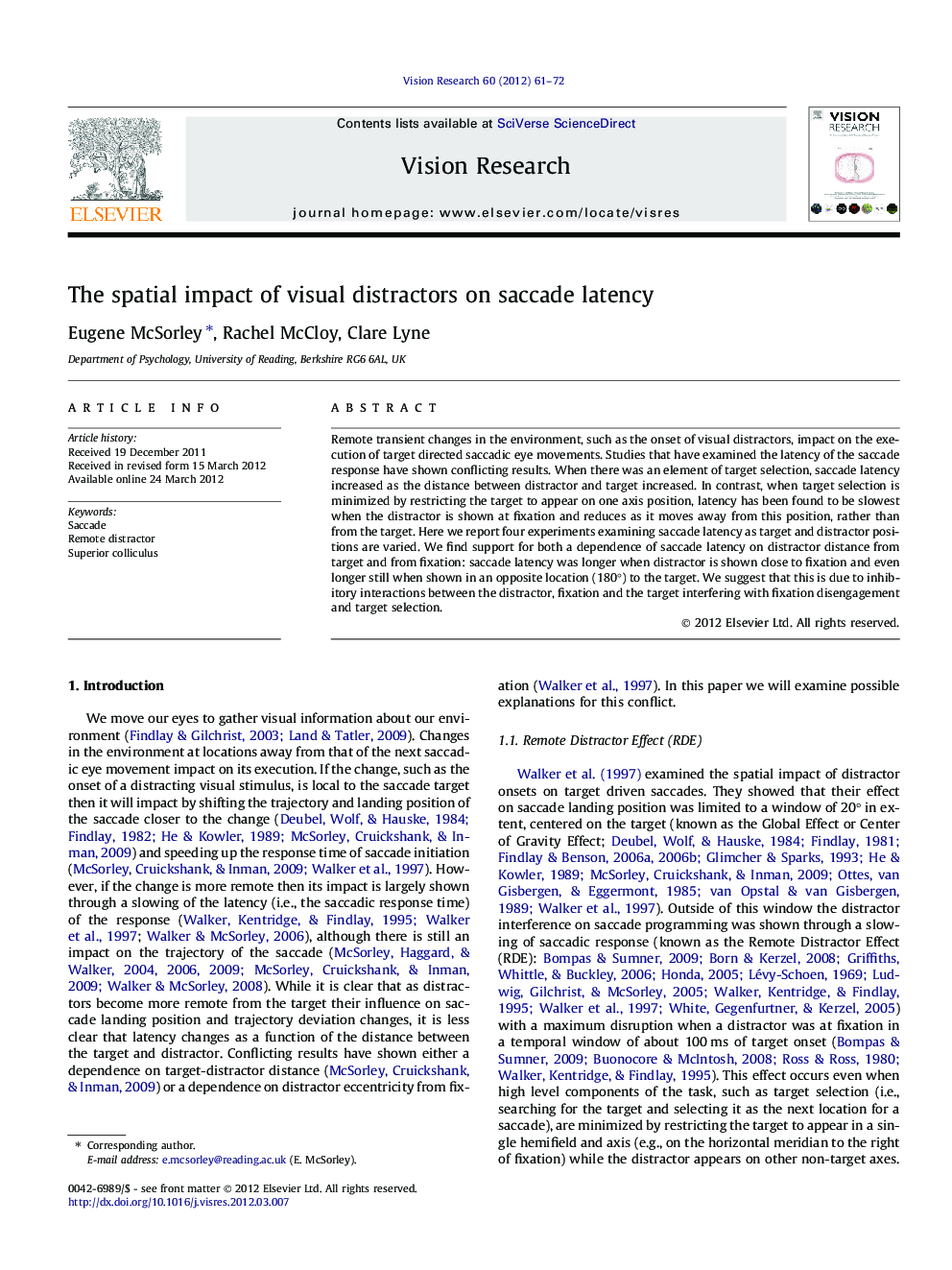| Article ID | Journal | Published Year | Pages | File Type |
|---|---|---|---|---|
| 4033962 | Vision Research | 2012 | 12 Pages |
Remote transient changes in the environment, such as the onset of visual distractors, impact on the execution of target directed saccadic eye movements. Studies that have examined the latency of the saccade response have shown conflicting results. When there was an element of target selection, saccade latency increased as the distance between distractor and target increased. In contrast, when target selection is minimized by restricting the target to appear on one axis position, latency has been found to be slowest when the distractor is shown at fixation and reduces as it moves away from this position, rather than from the target. Here we report four experiments examining saccade latency as target and distractor positions are varied. We find support for both a dependence of saccade latency on distractor distance from target and from fixation: saccade latency was longer when distractor is shown close to fixation and even longer still when shown in an opposite location (180°) to the target. We suggest that this is due to inhibitory interactions between the distractor, fixation and the target interfering with fixation disengagement and target selection.
► We systematically examine conflicting findings in Remote Distractor Effect (RDE). ► RDE is stronger the closer the RD is shown to fixation. ► RDE is even stronger when the distractor is opposite the target. ► This is termed an “Opposed Distractor Effect”. ► We show the spatial extent of this effect.
